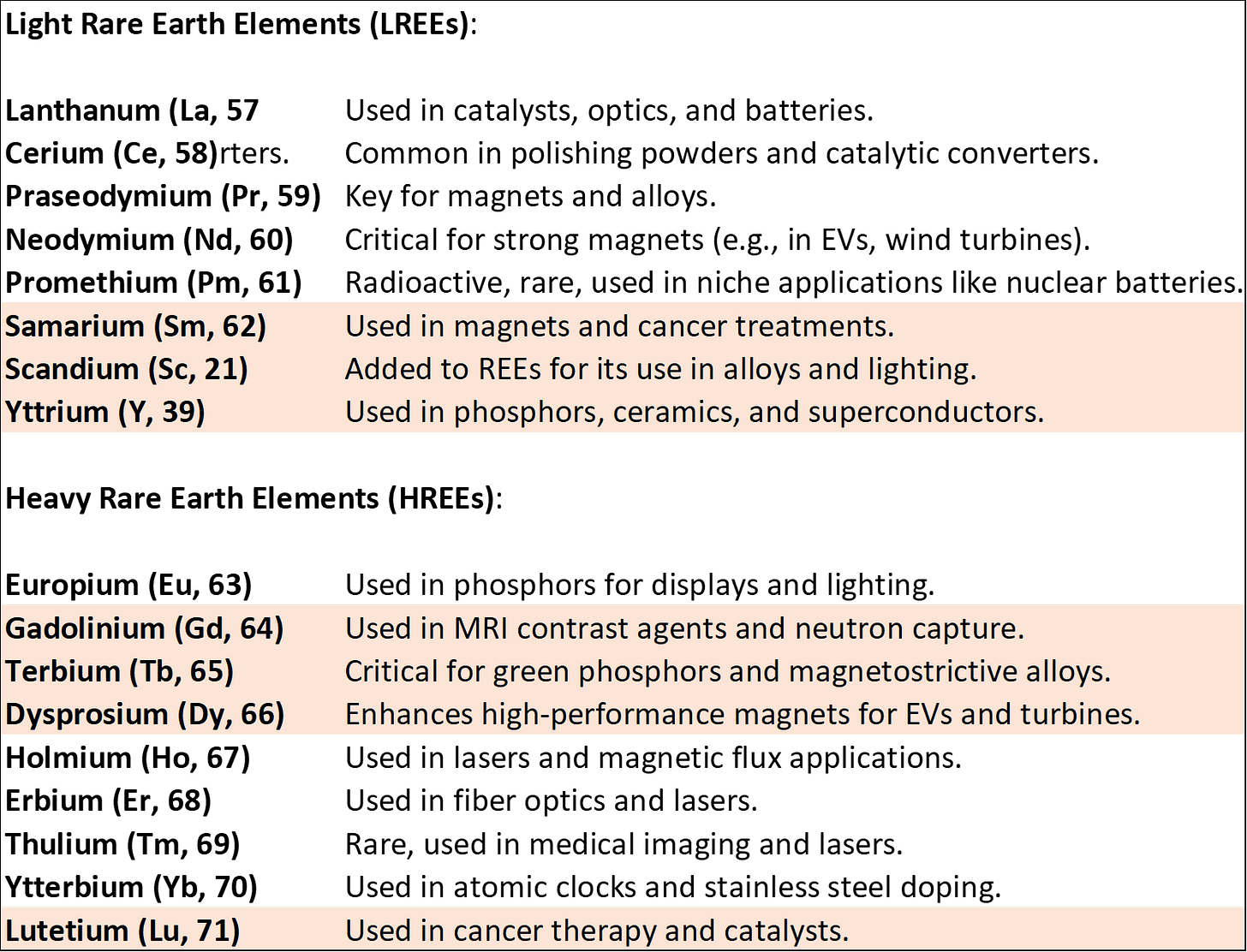Know Your Rare Earth Elements As China Restricts Exports
China recently escalated restrictions on the export of rare earths. Not just to the US as the two global players go toe-to-toe on tariffs; but to all countries.
China’s latest round of restrictions target critical materials used in defense, electronics, and EVs.
Apart from China, the world's largest refining - not just the largest miner - who else refines rare earth elements, specifically heavy rare earths?
The majority of figures cited below are drawn from various sources, be they global media sources, or mining-centric journals.
The NEW (ish) News
On the 4th April, China announced export restrictions on seven medium and heavy rare earth elements in retaliation against renewed U.S. tariffs.
These controls are not outright bans per se; but an export control measure involving licensing.
Exporters are required to obtain licenses from the Ministry of Commerce, enabling Beijing to scrutinise the end-user.
Export controls apply to all countries, with no specific exemptions announced.
Note: China initially imposed export controls to the US on gallium and germanium in July 2023 and on antimony in August 2023. These restrictions were elevated into a full ban on exports of these materials to the U.S. in December 2024. These are no rare earth elements.
Additionally, in December 20233, China banned the export of rare earth magnet production technology.
Rare Earths 101
"Rare earth elements" typically refer to the 17 elements (mostly atomic numbers 57–71): lanthanum, cerium, praseodymium, neodymium, promethium, samarium, europium, gadolinium, terbium, dysprosium, holmium, erbium, thulium, ytterbium, lutetium, plus scandium and yttrium.
In rare earth classification, "heavy" refers to elements with higher atomic numbers, typically from Europium (63) to lutetium (71). These elements are scarcer, harder to extract, and critical for high-performance magnets (such as dysprosium, terbium), and medical applications (such as gadolinium for MRI). Or simply more valuable for tech and defense.
"Light" rare earths, like samarium (62), scandium (21), and yttrium (39), and typically more abundant, and used in alloys (scandium), magnets (samarium), and phosphors (yttrium).
China's recently imposed export controls were on seven elements: samarium, gadolinium, terbium, dysprosium, lutetium, scandium, and yttrium.
These are coloured in peach in the table below.
Keep reading with a 7-day free trial
Subscribe to Hong Kong/China M&A/Events to keep reading this post and get 7 days of free access to the full post archives.


